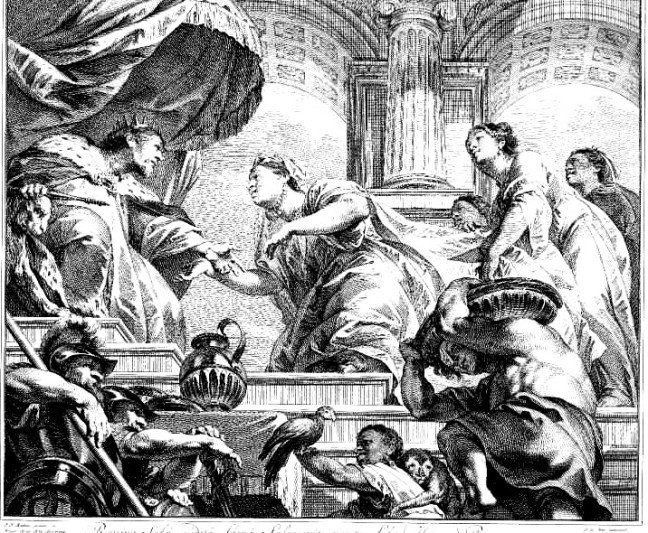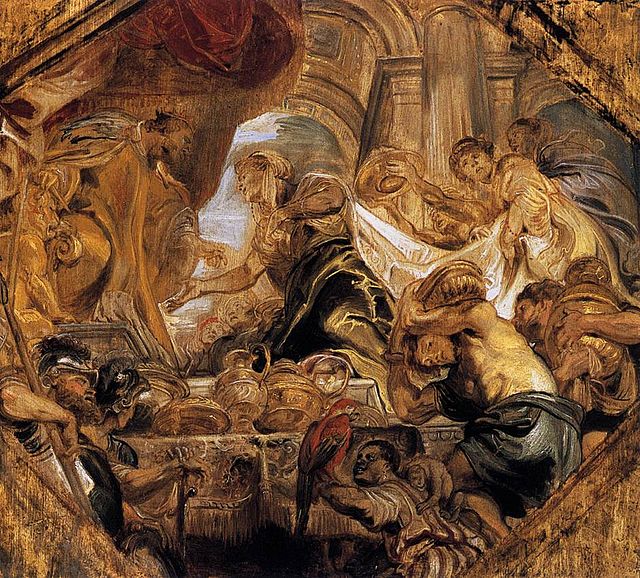Rubens’ Mysteries of Salvation re-imaged; presented by Phillip Medhurst.
In 1621 the Jesuits in Antwerp completed the construction of a magnificent new church. Rubens was commissioned to create 36 ceiling paintings in the sanctuary’s side aisles and galleries, and 3 in the underside of the organ loft. Each work measured approx. 210 by 280 cms. All of his designs were rendered di sotto in sú. In 1718 the church was struck by lightning, and the paintings, on canvas set into wooden frames, were destroyed in the ensuing fire.
In the side aisles and under the organ loft were depictions of saints.
The paintings in each of the 18 bays in the upper-level galleries (copies of which are here presented) depicted the mysteries of salvation through a series of typological comparisons between Old and New Testament scenes. Rubens’s original compositions survive in 2 preliminary drawings and 29 oil sketches by his own hand (5 grisailles and 24 coloured modelli), now in various collections. In 1711-12 Jacob De Wit (1695-1754) made drawings (now lost) after 36 of the 39 ceiling paintings. On hearing of their destruction he set about publishing his set of drawings. Dissatisfied with his initial sketches, De Wit made several sets of variously sized copies using red and black chalk and watercolours. A set of 36 watercolours is kept in the Stedelijk Prentenkabinet in Antwerp. 35 watercolours reside in the Courtauld Institute. De Wit then passed on the project to the engraver Jan Punt. Another series of drawings was completed by Christian Benjamin Müller (1690-1758) six months before the fire. These are now in the Stedelijk Prentenkabinet, Antwerp.

